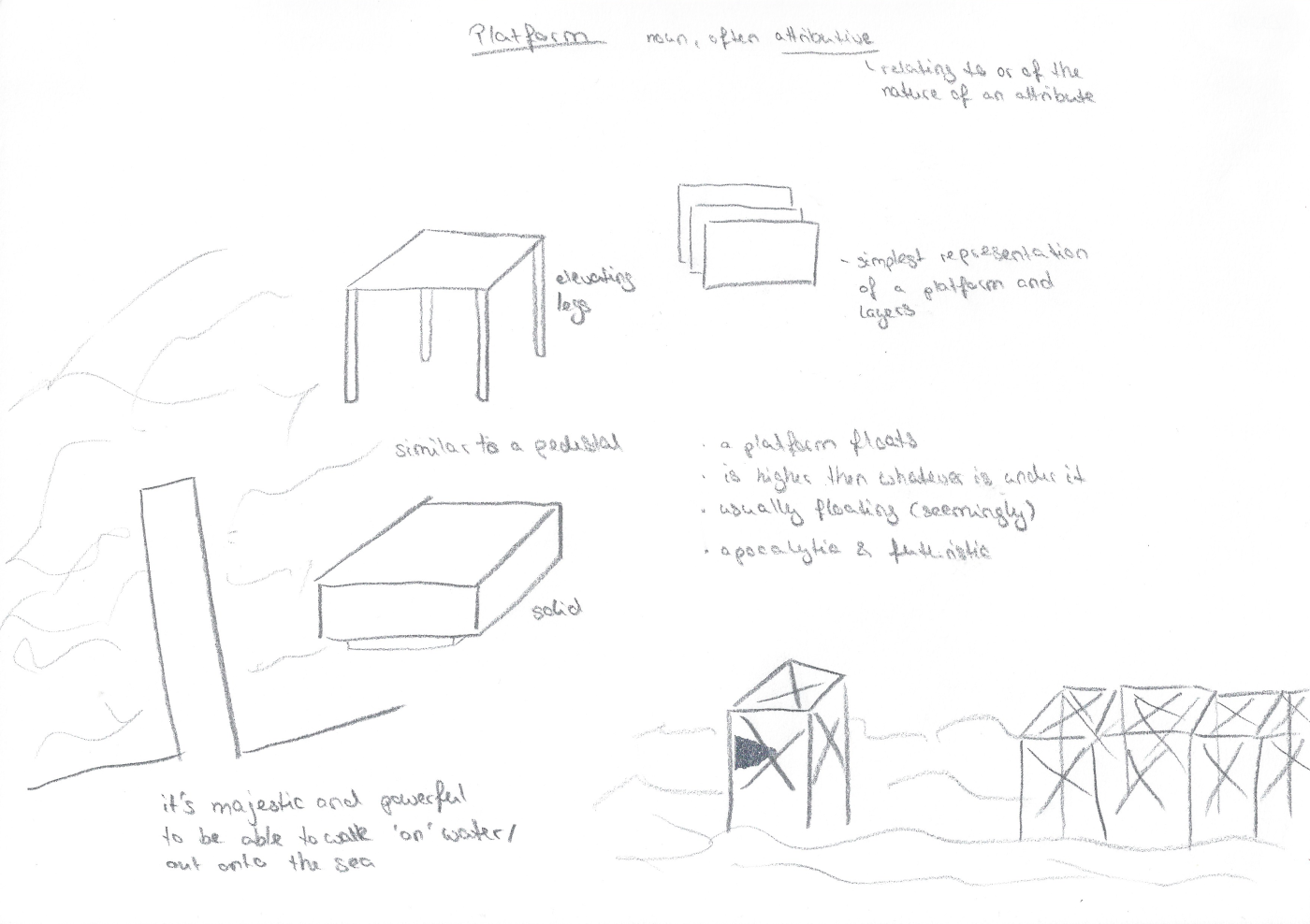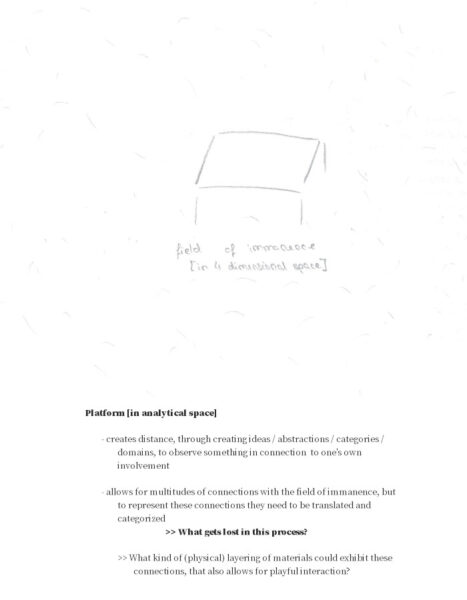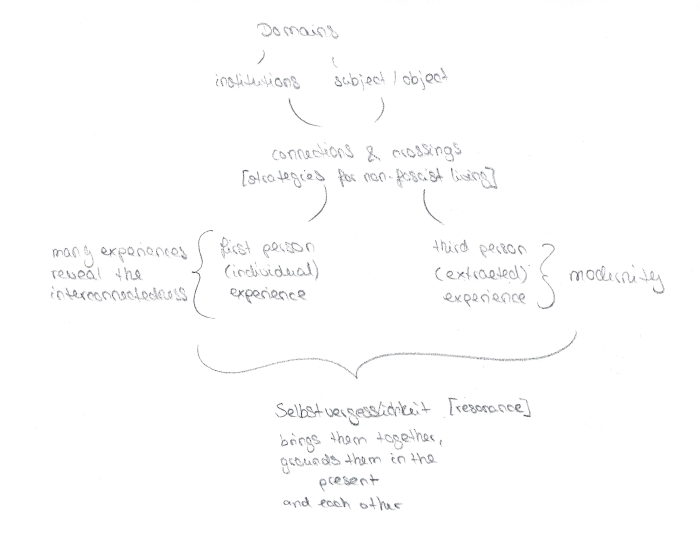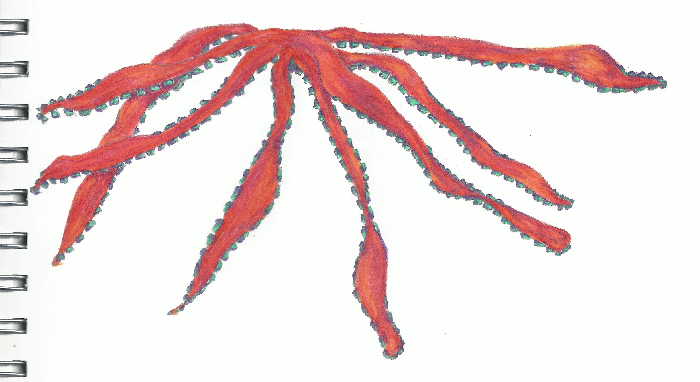 Agenda
Artikelen
Programma
Agenda
Artikelen
Programma

During the latter months of 2020, Nele Brökelmann worked as an artist in residence at Witte Rook. She took Witte Rook as a case study to look into online publishing strategies by artists, and the potentialities of an online platform as a connector. She translated her findings into textual and visual essays.
JR: What kind of thoughts and feelings arise when hearing the word ‘platform’?
NB: The idea of a platform is very abstract to me, somehow physical and conceptual aspects melt together. I see it as a structure from which tentacles slowly breach out to sense where new connections can be made, and allows for others to connect to it.
When I looked at ‘platform’ with a conceptual lens I realized that it is always elevated. A platform usually has legs that lift it up from whatever it is surrounded by or grounded in. What does that mean? What kind of feeling belongs to that characteristic? Is it a feeling of power? When walking on wooden bridges over water or wetlands, you can see between the decking with a safe distance to what is beneath you. I always found it mesmerizing to look through those gaps without falling through and getting sucked into that intangible vastness.
Platforms seem to always be stable, while everything around them is continuously in motion. I got very intrigued by the idea of unstable ground, where things are only stable for a fraction of a moment before they have to shift and readjust to stay in place. What would a platform be in that scenario? It might not elevate us anymore but be a guide through ever-changing surroundings.
Eventually I arrived at the image of a supporting structure on the wide open sea, without a clear purpose to it being there. The continuous movement of the water reflecting spots of light upon the brightly colored structure.

JR: What would you say are the anchor points in your artistic practice, and how does a research residency fit into it?
NB: The anchor points in my artistic practice are reading, processing that through writing and drawing, and wandering through my own thoughts and experiences. It is quite a slow process that slowly lets an image arise in my mind, which then brings about the works I make. The research residency gives me the opportunity to spend time with my individual artistic process after a very busy period of about half a year working in collaboration for [蒸汽船] Steamboat. This time has helped me slow down and discover what I learned from that collaboration, and get back into my own process and research.
In my research, I continuously examine our cognitive perception of the world, the social hierarchies and power structures that evolve from that, and the possibilities to be in resonance with the world, which can make the frameworks and anchor points of our (individual) realities shift. To make a work I put myself through a process of wandering in my thoughts, allowing this to bring about new connections in my own understanding of the world. It is all about giving things time to evolve, and a research residency with an interim process presentation does that for me. It takes away the pressure of a ‘final’ result, giving me instead the opportunity to build a research routine – reading, writing, drawing, wandering, following tutorials, climbing, cooking, eating, sleeping, relaxing, and making.
JR: The word ‘process’ keeps coming back, you already provided some insight into which forms or modes of being it takes in your research. How would you define ‘process’?
NB: If I would have to describe ‘process’, I would call it a joyous intuitive routine that is defined by repetition which leads to skill acquisition and long-term investigations. It is a trajectory of discovery with a larger goal to work toward which does not need to be achieved. It is not about gaining specific knowledge that leads to a truth, but opening new paths, understandings and questions. A process needs to be cautiously nourished, and given time to unfold and grow – it is impractical, schizophrenic, and unpolished; I see it as the definition of being as becoming.
In the first part of Nele’s residency, an informative article ‘Platform: noun, often attributive’ was published on WitteRook.nu. Between November 9th and 15th 2020 the first part of her video-essay was projected onto Witte Rook’s downstairs window viewable from the sidewalk.
Where the article mentions reading Bruno Latour’s book An Inquiry into Modes of Existence – An Anthroplogy of the Moderns and using this as a theoretical framework, the video-essay aims to give a playful insight on Nele’s experiences re-visiting Breda and connects to bigger questions as the sense of time.
JR: What caused you to pick up An Inquiry into Modes of Existence and which insights did you gain from it until now?
NB: In 2016 I joined a reading group called Latourism. As the name suggests, the group was founded on the idea to read texts by Bruno Latour in combination with other contemporary thinkers that connect in various ways to his theories. In An Inquiry into Modes of Existence Latour looks into ideas of mapping and categorizing different domains in relation to how we experience the world, proposing ways to start rethinking these categorization systems. When I look at my research of the past few years, I always wanted to understand why people do what they do, how they arrive at their beliefs and perceptions of the world, and how they come to fighting against or agreeing with societal and power structures.
Reading Latour was a long-term wish of mine, with the intention to slowly move towards an understanding of the world as something that is based on inter-relations. A while ago, I listened to Donna Haraway talk about Lynn Margulis’ work in which she describes how bacteria ate each other and thereby evolved into something else together and through each other, which is the only way for survival in the long-run. So, if we look through the microscope at a particle in a sterile lab, we just see one moment in the existence of this particle, but we will never know how it would have developed in its own environment. Latour looks at how Western institutions are set up and how we perceive them as independent entities, while none of them can exist without the other. It is this attempt to shift our perspective away from the individual to the individual in relation to others. I guess it is a shift away from representation toward a relational understanding of the world – wherein each relationship has its own properties. That is basically what Latour is trying to do, to teach us to see each being (subject, object, etc.) in their own mode of existence.
That is something that I wish to learn, moving away from a human centered perception and representation in my work, toward investigating, discovering and sensing our relations to other entities in the world.

JR: I think this moving away from a human centered perception is something that’s going on widely right now, not only related to the arts but also on the topic of climate change for example. The individual seems to be willing to give up its individuality ‘for the greater good’. At the same time it’s a return to being human, because sensing, discovering and investigating our relations are human activities. What do you mean by human centered perception? Can you give an example on how this moving away from human centered perception takes shape in your work?
NB: That is true, and that is probably the urgency I feel to deal with what it entails to be part of this world myself. In my current work and research I am consciously trying to move away from representation and rationalizing everything back onto the human scale. In the essays I am writing, I am connecting my research endeavors to personal experiences and how my stories relate to the stories of others. I think that is how I understand the world and can broaden that understanding. While for the first video essay, I did not want to use the platform as a representation but investigate what it could be and how it might relate to its immediate surroundings. The text I added to the video, starts with personal reflections, but then branches out to other entities and their own sense of time. I don’t think I am in a position to explain how they experience time, but I can acknowledge and observe them in their own mode of being, and learn from them.

JR: How would you describe the role of sensing in your artistic practice and what is the connection to your research on the online platform of Witte Rook?
NB: In my works I always aim to capture a moment of realization, the brief moment when one’s own role and inter-relatedness with others becomes perceptible. Throughout the years I have worked with various media: drawing, text, video, photo, installation and situation. I am always looking for the medium that works best for the work I am intending to make to bring about a moment of realization. Recently, I am working on making writing and publishing a permanent part of my practice. I am always looking for ways I have not thought about yet. So, by looking at the various texts on Witte Rook by other artists and how they are published I am aiming to discover ways to play more freely with the medium and sustain the intangible moment of realization in my writing. To me, drawing is also a way of writing – to capture what I cannot put into words – therefore I am looking into ways to integrate these drawings playfully into my texts.
JR: In the visual essay, water plays a leading role. There is, among others, a comparison between collecting sensory input and the growth of a stalagmite. Like a stalagmite, the body ‘has to keep moving to stay in the same spot’. The visuals in the video are rendered bodies of water in different perspectives. This made me think about an oil-platform, a form in the midst of the vast water, pumping up oil from a depth crossing two surfaces. The platform stays the same, everything around and through it is fluid. While the poetic elements and mode of thinking the water provides are clear and attractive, it comes across like an element in a game. In this game-like-mode, I can only receive what you choose to share. What are your thoughts on a platform being a possible meeting and sharing point?
NB: I think that is exactly what it should be. A platform should not only hold content, but needs to be a connector and a carrier that allows for new collaborations and endeavors. It should also generate a shift within our experience of the world, thereby becoming a catalyst, challenging us to remake meanings through a retelling of our stories and encourage us to wander. That is at least what I hope to induce with my works: I hope to introduce a moment of being in resonance, which, in my experience, can open up new explorable paths and connections, and shift our understanding of our own and others’ modes of being in the world.